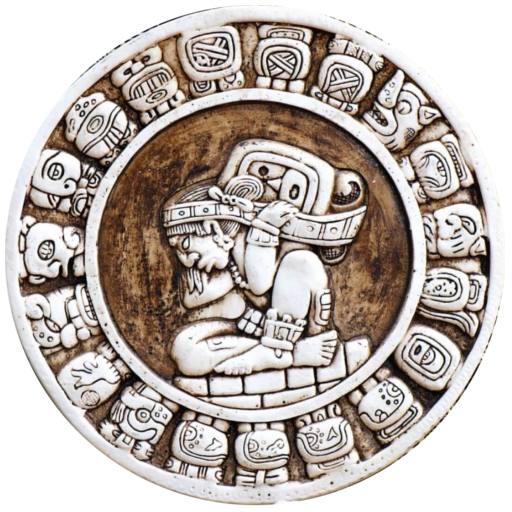Autonomous University of Yucatan
UADY
UADY
Autonomous University of Yucatan (UADY), that just turned 96 years of its foundation; is recognized as one of the best in the country and the most relevant in the region, which is the result of the efforts of academics, students, administrative staff and workers. Among the UADY’s achievements there are 273 SNI-CONACYT ( -SNI- National Researchers System) membership teachers; which means 28.3% of the total professor-researcher number in the country, and that translates in the highest quality and relevance research, allowing UADY study program internationalization. Recently, 22 educational programs entered the CENEVAL’s high academic performance EGEL-Census, and that represents 45% of the integrated programs in the state. Placing UADY in the fourth place nationwide, two of them reaching 1-plus level.
The above is a students’ achievement token and a constant update and improvement in study programs, as well as it’s execution by the teachers and administrative staff in each campus.
Recognizing the importance of technology in the world’s educational outlook, 5 years ago the Online Bachelor’s degree Program was implemented. This program allows to offer alternatives to the class attendance with the same quality to people with specific needs and skills in IT usage, having great demand and impact in young and adult individuals that before had no chance to access a Bachelor’s degree program. Coming soon an Education Graduate Degree will be offered as the first wholly online graduate degree.
Currently there are a Bachelor’s degree program, 45 Graduate Degree programs, and 61 Postgraduate programs in which 25,000 young students take their courses. At professional level 97% of the enrolled pupils study in programs that have the highest national quality recognition and 46% of the Postgraduate programs are recognized for the same reason.
96% of academic personnel is Postgraduate, two thirds (68%) SEP-PRODEP recognition and a third (30%) is noted by CONACYT for their research. UADY has 77 academies (86% consolidated or in consolidation process), up to date technological and scientific functional infrastructure.
UADY faces an unavoidable task, depending on it are the foundation of the new social order and keeping the hope alive for the young Yucatan people.
Brief history of the UADY.
This University, founded in 1624 by Felipe IV’s Royal Decree and Gregory XV’s papal bull, was directed by the Jesuits and granted the Br., Lic., Mtro. and Arts master (Philosophy), Canon and Theology. Afterwards Humanities and Sciences were taught.
Merida’s University of Yucatán which would be the fifth establishment on the continent and the second in México, was founded by the Saint Ignacio de Loyola’s Order priests.
The structure was built thanks to Martin de Palomar’s donation. The University’s Aula Magna was located in the space that for many years was the seat of the State’s Congress and it’s located in the alley of the same name. Both educational institutions were abandoned in 1767 as a result of the banishment of the Jesuits from the America’s Spanish colonies.
Years later San Ildefonso’s seminary would be founded, dedicated to priests formation.
The State’s Literary Institute would be located in the old Saint Peter’s College. Towards the beginning of the 20th century, despite that access to Graduate education was a right already, few were the young people that, in fact, had access to the Institute.
With the Liberal Reform and the Republic’s triumph, education becomes secular, free and open to advances in science.
General Manuel Cepeda Peraza, in 1867, founds the Literary Institute of the State along with the Literary Institute for Girls. Among its schools counted on the Jurisprudence and Notary.
Representative Felipe Carrillo Puerto, in the year 1918, was concerned and tried to crystallize his project with the purpose that the unprotected sectors had access to university education, preparation of which he lacked.
That is how he announces his intention to create the Yucatecan University, and it is precisely in 1918 when, together with representatives Arturo Sales Díaz and Héctor Victoria, he presents the initiative in the plenary session of the congress and he approves it on March 27, 1918.
Carrillo Puerto was a social fighter, restless, dynamic, and idealistic, with an excessive love for those who had less and fought not only to return the lands to their legitimate owners, the peasants, but also restored their dignity, pride and freedom.
It is presented to the state governor, Carlos Castro Morales, for its promulgation and publication in the Official Gazette of the State; however, the executive refrains from doing so. Representative Carrillo Puerto does not give in in his struggle, in his beliefs, his ideology and in what he wanted for Yucatan. Four years later, his project would be a grand reality.
On 25th February, 1922, the National University of the Southeast is founded on the initiative of the already governor Felipe Carrillo Puerto.
On 5th November, 1938, State Congress changed the name of the National University of the Southeast to the University of Yucatan and on 1st September, 1984, the autonomy regime came into force and the abbreviations of the University of Yucatán became formally from UDY to UADY.
The first faculties were those of Jurisprudence, Medicine and Engineering, the Literary Institute or high school, and the Normal Mixed, Music and of Beautiful Arts Schools. Its first rector was Dr. Eduardo Urzaiz Rodríguez. The initial enrollment was one thousand 737 students.
The institution evolves significantly when the process of integrating its faculties into five campuses is completed by areas of knowledge: Social Sciences, Economic Administrative and Humanities; Exact Sciences and Engineering; Health Sciences; Biological and Agricultural Sciences, and Architecture, Habitat, Art and Design. Currently, at UADY more than 23 thousand young people study in high school, undergraduate and postgraduate education programs.
At the professional level 96.89% of the enrollment study in programs that have the highest national quality awards.



